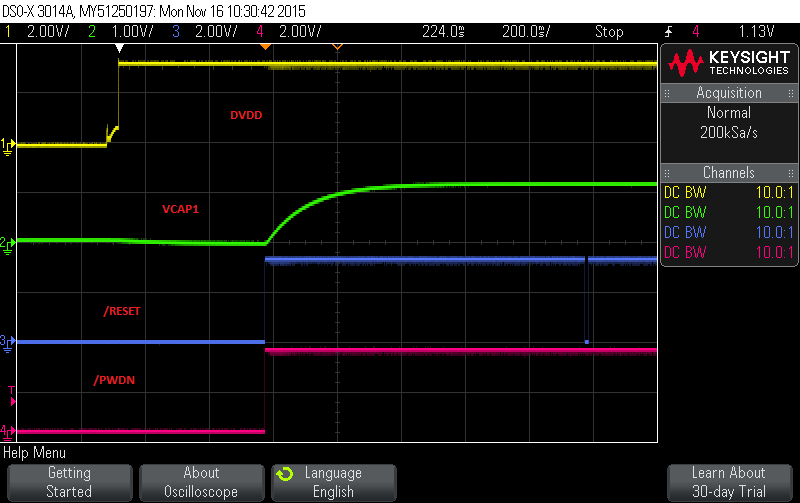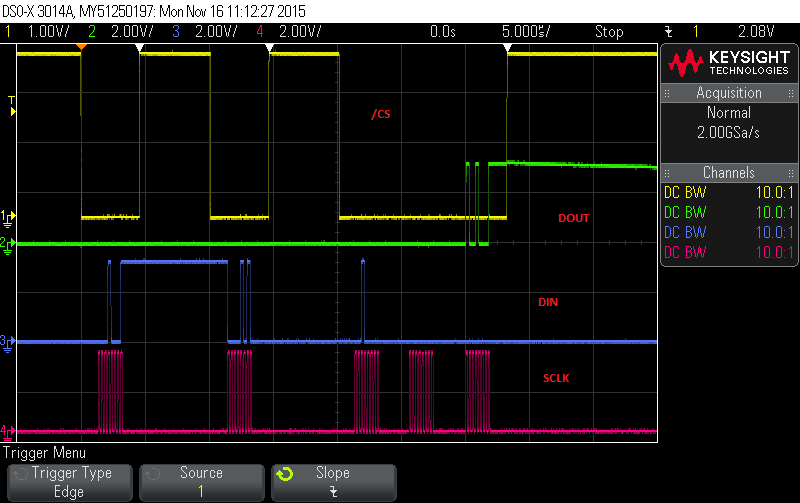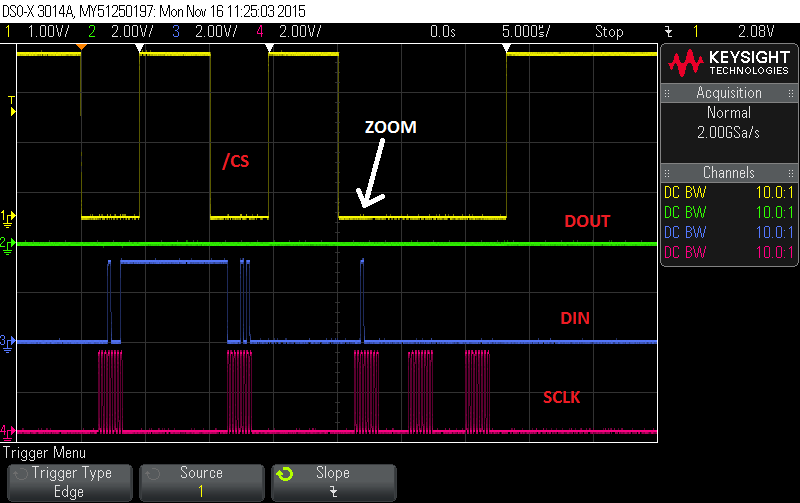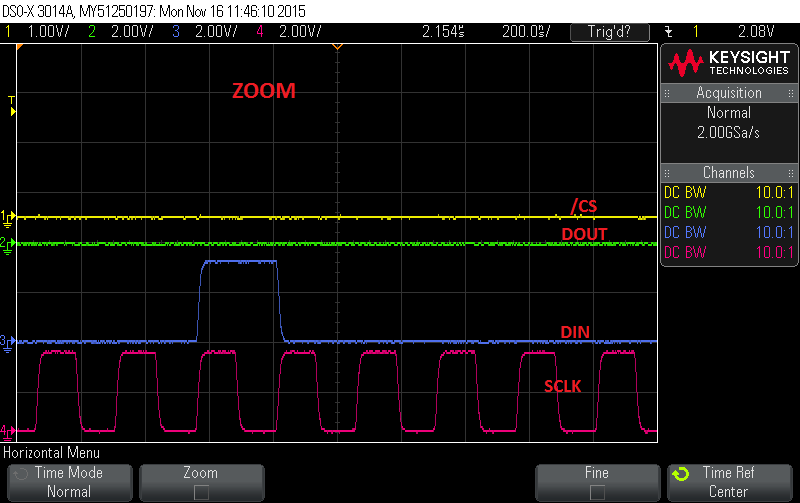Hello,
Do you have a power up sequence for the ads1296 for DVDD, AVDD, /RESET, /PWDN and /CS signals please?
I look at the datesheet Power-up sequencing but all signals are not indicated. I am using the internal clock.
I am do the following sequence and it does not work every time:
- set DVDD and AVDD while other signals are low
- wait 500ms
- set /RESET high
- set /PWDN high
- wait 1000ms (on oscilloscope VCAP1 is at 1.1V after 500ms)
- set /RESET low
- wait 10ms
- set /RESET high
- set /CS high
- wait 500ms
- send spi SDATAC (0x11) command
- wait 20ms
- send spi STOP (0x0A) command
- wait 1500ms
- read ID register to check the value
=> here sometime the return value is 0x00 ????, sometime it is a success at the first attempt ....
After multiples reads it finishes by a success (0x91) but the number of reads before a success is random ????
it could be up to 20 reads before a success ....
Best regards
Mich





